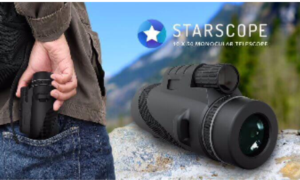Over the previous years, the landscape of professional games has been significantly transformed by technological advancements. These innovations have enhanced athlete performance, improved safety, and elevated the overall fan experience. This article delves into the top 10 game-changing sports technologies of the decade that have made a substantial impact on professional sports.
Wearable Technology:
Wearable technology has become a staple in professional sports. Devices such as Fitbit, Garmin, and Whoop provide real-time data on an athlete’s performance, including heart rate, sleep patterns, and activity levels. Coaches and trainers use this data to monitor an athlete’s workload, prevent injuries, and optimize training programs. This technology has made performance tracking more precise and personalized.
GPS Tracking Systems:
GPS tracking systems have revolutionized how professional sports teams monitor player movements. Tools like Catapult and STATSports provide detailed metrics on distance covered, speed, and positional data. This information is crucial for developing strategies, optimizing training sessions, and preventing injuries. GPS tracking has become indispensable in sports like soccer, rugby, and American football.
Video Analysis Software:
Advanced video analysis software, such as Hudl and Dartfish, has changed the way coaches and athletes review performance. High-speed cameras capture detailed footage that can be analyzed frame-by-frame. This allows for in-depth analysis of techniques, tactics, and strategies. Video analysis is particularly beneficial in sports requiring precision and technique, such as gymnastics, swimming, and tennis.
Virtual Reality (VR) Training:
Virtual Reality (VR) training has opened new avenues for skill development and strategy visualization. Platforms like STRIVR and Oculus provide immersive environments where athletes can simulate game scenarios and practice without physical exertion. This technology is extensively used in sports like American football and basketball to improve decision-making skills and mental preparation.
Biofeedback Devices:
Biofeedback devices monitor physiological functions, helping athletes understand their body’s responses to different stressors. Technologies like Muse and Halo Neuroscience provide insights into muscle activity, heart rate variability, and brain wave patterns. Athletes use this information to enhance focus, manage stress, and improve mental resilience, which is crucial in high-pressure sports like golf, shooting, and archery.
Smart Sports Equipment:
Smart sports equipment, embedded with sensors, provides real-time feedback on performance metrics. Examples include Babolat Play smart tennis rackets, Wilson X smart basketballs, and Zepp smart golf clubs. These devices measure parameters such as speed, spin, and impact force, offering valuable insights for performance improvement. Smart equipment helps athletes refine their techniques and achieve better results.
Advanced Recovery Tools:
Recovery is a critical aspect of professional sports, and advanced recovery tools have made significant strides in this area. Technologies like NormaTec compression systems, Hyperice percussion devices, and Theragun massagers aid in muscle recovery, reducing soreness and inflammation. These tools enhance blood circulation, accelerate recovery, and prepare athletes for their next training session or competition.
Sports Analytics Platforms:
Sports analytics platforms like SAP Sports One and IBM Watson have revolutionized data analysis in professional sports. These platforms analyze vast amounts of data, including player performance, opponent strategies, and game statistics. Coaches and analysts use this data to make informed decisions, develop game plans, and optimize training programs. Sports analytics has become a vital tool in gaining a competitive edge.
Environmental Sensors:
Environmental sensors monitor conditions such as temperature, humidity, and air quality during training and competitions. Devices like Kestrel and Heat Stress Monitors help athletes and coaches understand the environmental impact on performance and adjust training accordingly. These sensors are particularly important in outdoor sports like marathon running, cycling, and triathlons, where environmental factors can significantly affect performance.
Artificial Intelligence (AI) and Machine Learning (ML):
Artificial Intelligence (AI) and Machine Learning (ML) have made significant inroads into professional sports. AI-powered tools like IBM Watson and Kitman Labs analyze player data to predict injuries, optimize training loads, and personalize training programs. Machine learning algorithms identify patterns and trends, providing actionable insights for performance improvement. The integration of AI and ML in professional sports has made training more precise, efficient, and tailored to individual needs.
Conclusion:
2024 has seen remarkable progress in sports technology, fundamentally changing how professional athletes train, compete, and recover. From wearable fitness trackers and GPS performance monitoring to virtual reality training and AI-powered analytics, these technologies have enhanced athletic performance by making training more scientific, data-driven, and personalized. Embracing these innovations not only boosts performance but also ensures the safety and well-being of athletes. As technology continues to evolve, the future of professional sports looks even more promising, offering endless possibilities for athletes to achieve their full potential. By leveraging these game-changing technologies, athletes and coaches can stay ahead of the curve and drive continuous improvement in sports performance.


































